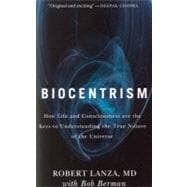
Note: Supplemental materials are not guaranteed with Rental or Used book purchases.
Purchase Benefits
What is included with this book?
| Introduction | p. 1 |
| Muddy Universe | p. 3 |
| In the Beginning There Was ... What? | p. 11 |
| The Sound of a Falling Tree | p. 19 |
| Lights and Action! | p. 25 |
| Where Is the Universe? | p. 33 |
| Bubbles in Time | p. 41 |
| When Tomorrow Comes Before Yesterday | p. 47 |
| The Most Amazing Experiment | p. 61 |
| Goldilocks's Universe | p. 83 |
| No Time to Lose | p. 95 |
| Space Out | p. 111 |
| The Man Behind the Curtain | p. 129 |
| Windmills of the Mind | p. 135 |
| A Fall in Paradise | p. 143 |
| Building Blocks of Creation | p. 147 |
| What Is This Place? | p. 153 |
| Sci-Fi Gets Real | p. 163 |
| Mystery of Consciousness | p. 169 |
| Death and Eternity | p. 185 |
| Where Do We Go from Here? | p. 195 |
| The Lorentz Transformation | p. 199 |
| Einstein's Relativity and Biocentrism | p. 201 |
| Index | p. 209 |
| About the Authors | p. 213 |
| Table of Contents provided by Ingram. All Rights Reserved. |
The New copy of this book will include any supplemental materials advertised. Please check the title of the book to determine if it should include any access cards, study guides, lab manuals, CDs, etc.
The Used, Rental and eBook copies of this book are not guaranteed to include any supplemental materials. Typically, only the book itself is included. This is true even if the title states it includes any access cards, study guides, lab manuals, CDs, etc.